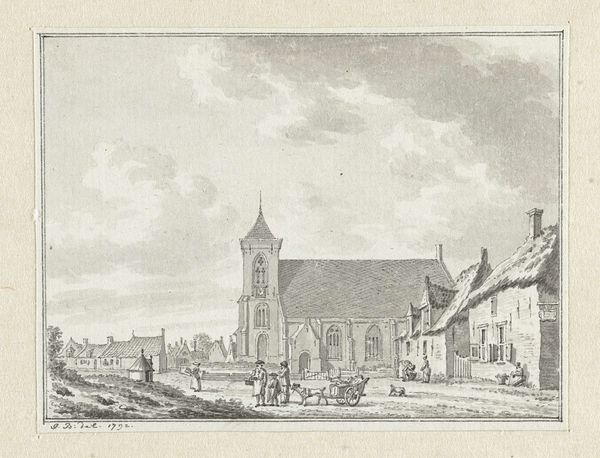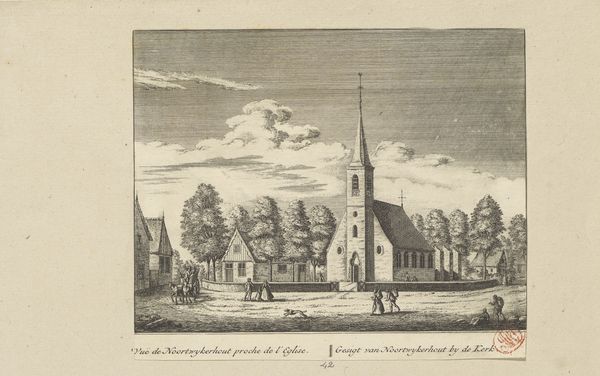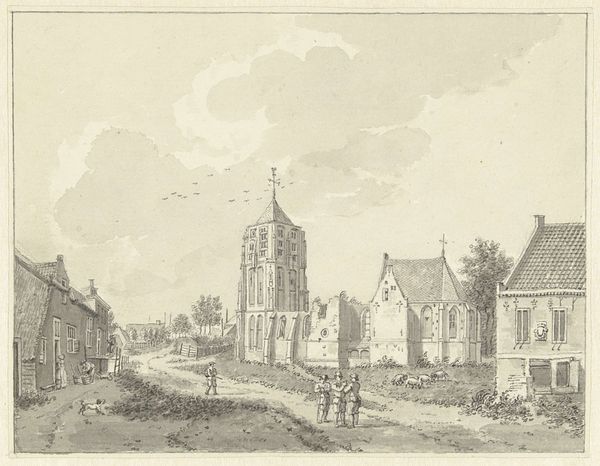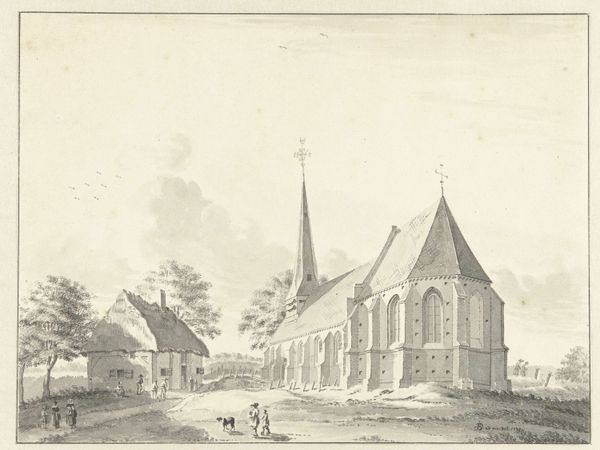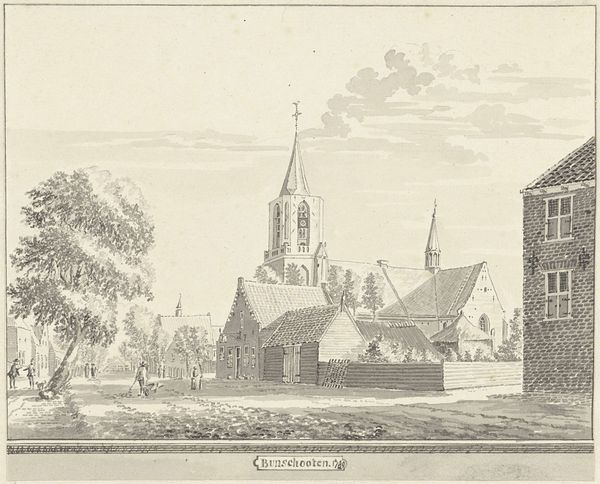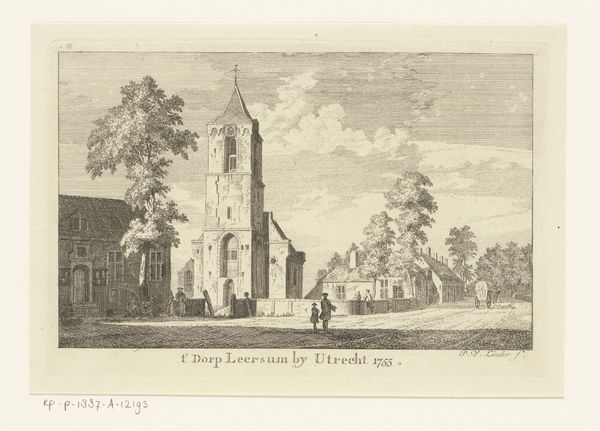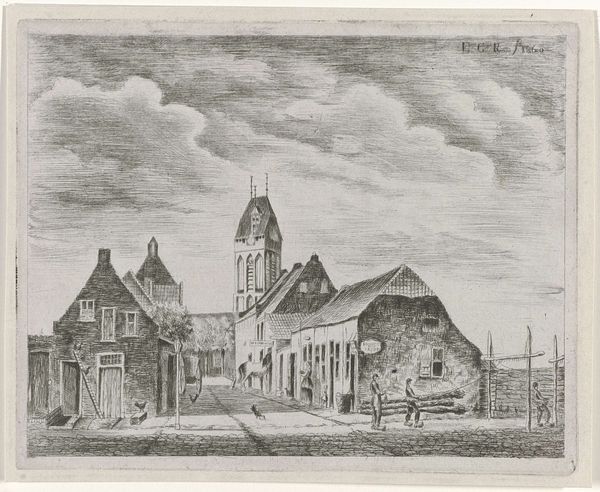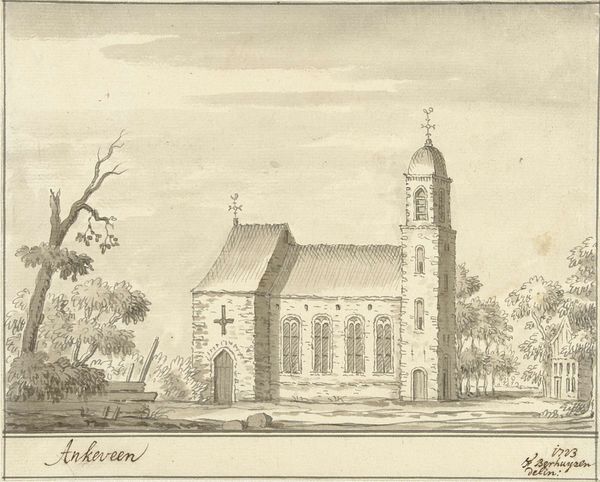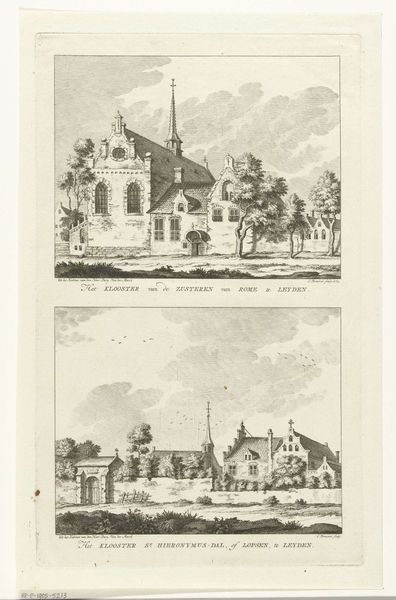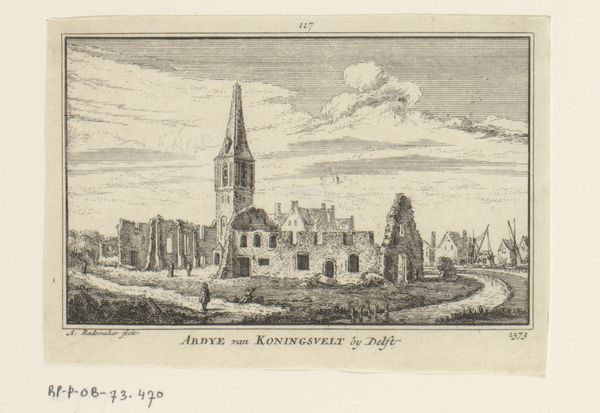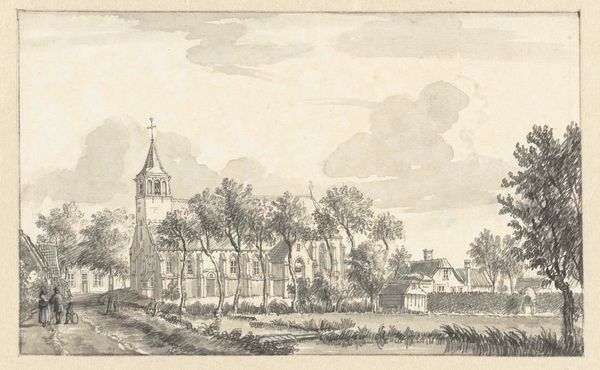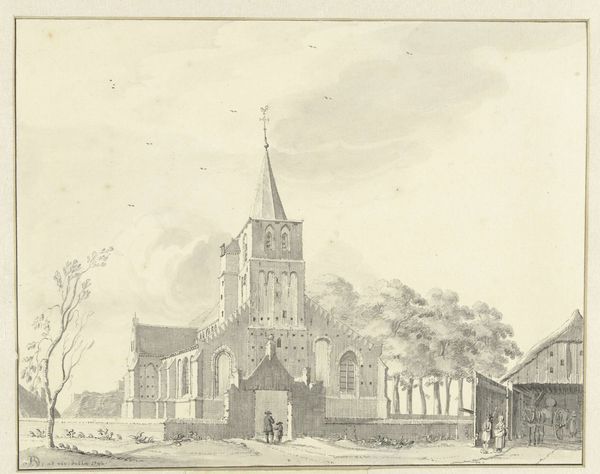
Dimensions: height 80 mm, width 113 mm
Copyright: Rijks Museum: Open Domain
Curator: This is "Gezicht op de kerk te Spaarnwoude," or "View of the Church at Spaarnwoude," an engraving by Abraham Rademaker dating from around 1725 to 1803, here at the Rijksmuseum. Editor: It has a wonderfully serene quality. The landscape, rendered in a delicate monochromatic palette, is so still; the scene exudes quietude. The detail given to the church is in direct contrast to the impressionistic clouds which lends a slightly unsettling air of impermanence to this assumed tranquility. Curator: Rademaker was very interested in Dutch topography; this work offers more than just a depiction of a place. We have a very precise depiction of the Church as a physical structure; we see its importance within the town as it takes a very centered position in this piece. Editor: Precisely! Look at the tiny figures strolling in the foreground; they’re dwarfed by the architectural structures. To me, Rademaker may be underscoring themes of faith, community, or perhaps, the overwhelming power of societal structures that both give life, and demand unwavering devotion, creating societal power structures. What do you suppose he meant by it? Curator: That's where things become truly interesting, it is through our public and civic architecture that individuals have chosen to connect to a community outside of themselves. You highlight a relevant perspective when contextualizing societal connections from faith, family, and neighborhood. Editor: There is something quite ghostly about this. Maybe its monochrome tones but something is a bit haunted too? Curator: Ghostly, indeed, but it could be related to the political and cultural contexts from the 18th century, a very active period where people started defining themselves as political agents and through civic association. The piece’s real power is found when considering that societal shift and the tension in daily life. Editor: Rademaker truly captured more than just the geography; he invites us to consider its many social, and perhaps personal landscapes. Curator: Absolutely. A window into the complex dialogues between people and institutions during that historical period.
Comments
No comments
Be the first to comment and join the conversation on the ultimate creative platform.
